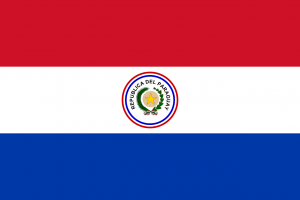Language/Paraguayan-guarani/Grammar/Pronouns
Hi Guaraní Learners! 😃
In today's lesson we will learn how to use pronouns in Guaraní.
Happy learning!
Take a moment to explore these relevant pages as you conclude this lesson: How to Use "Be", Future Tense & Give your Opinion.
Guaraní personal pronouns (terarânguéra)[edit | edit source]
The 'che' Personal Pronoun[edit | edit source]
Like English, Guaraní has a set of personal pronouns. The English word 'I' is a pronoun in the first person singular.
The Guaraní word for 'I' is 'che'.
| Guaraní | Translation |
|---|---|
| che avei | me too |
| che mante | just me |
| ha che ? | and me ? |
| che nahániri avei | me neither |
| che nahániri | not me |
Other Personal Pronouns in Guaraní[edit | edit source]
| Guarani | English | français |
|---|---|---|
| che | I | je |
| nde | you | tu |
| ha'e | he
she |
il
elle |
| [inclusion] ñande
[exclusion] ore |
we | nous |
| peê | you | vous |
| ha'ekuéra | they | ils
elles |
| Person | form | morph test |
|---|---|---|
| 1st person singular | che | che ↔ che |
| 2nd person singular | nde | nde ↔ nde |
| 3rd person | ha'e | ha'e ↔ ha'e |
| 1st person plural (inclusive) | ñande | ñande ↔ ñande |
| 1st person plural (exclusive) | ore | ore ↔ ore |
| 2nd person plural | peẽ | peẽ ↔ peẽ |
Personal pronouns in Guarani are mostly the same as the prefixes used with chendal verbs. They include first person and second person singular, third person (no distinction between singular and plural), first person plural inclusive, first person plural exclusive and second person plural.
| singular | plural | ||
|---|---|---|---|
| 1st person | inclusive | che | ñande |
| exclusive | ore | ||
| 2nd person | nde | peẽ | |
| 3rd person | haʼe | haʼekuéra/ hikuái (*) | |
- Hikuái is a Post-verbal pronoun (oHecha hikuái – they see )
Reflexive pronoun: je: ahecha ("I look"), ajehecha ("I look at myself")
Video (in Spanish) - Pronombres Personales en guaraní[edit | edit source]
Guaraní Demonstrative Pronouns[edit | edit source]
The 'ko' Demonstrative Pronoun[edit | edit source]
Demonstrative pronouns are used with nouns to make them more specific. The demonstrative pronouns 'this' in English is 'ko' in Guarani.
| Guaraní | Translation |
|---|---|
| ko aranduka | this book |
| ko tapicha | this person |
| ko mesa | this table |
| ko yva mansana | this apple |
| ko kavaju | this horse |
Other demonstrative Pronouns[edit | edit source]
Demonstrative pronouns recognize at least four deictic degrees (from proximal to distal): ko, pe, amo, ku (and their plural forms).
| Attributives | Non-attributives | |
|---|---|---|
| ko | kóva | “near the speaker” |
| pe | péva | “near the addressee” |
| upé | upéva | “away from both speaker and addressee” |
Note. Chart above reprinted from E. Gregores and J. Suarez.
In Guarani, demonstrative pronouns reflect the proximal-distal dimension of the contexts in which the pronouns are used.
Guaraní possessive pronouns[edit | edit source]
'che' Possessive Pronoun in Guarani[edit | edit source]
Possessive pronouns are used in Guaraní to describe possession or ownership.
The Guaraní word for 'my' is 'che'. The word 'che' often causes a sound change in the noun which follows it.
| che haiha | my pen |
| che mansana yva | my apple |
| che mesa | my table |
| che tataypy | my kitchen |
| che pirapire | my money |
Other Possessive Pronouns in Guarani[edit | edit source]
The possessive pronouns of Guarani are essentially the same as the personal pronouns. They include first person singular, second person singular, third person (no distinction between singular and plural), first person plural inclusive, first person plural exclusive, and second person plural.
| Person | form | morph test |
|---|---|---|
| 1st person singular | che | che ↔ che |
| 2nd person singular | nde | nde ↔ nde |
| 3rd person | ha'e | ha'e ↔ ha'e |
| 1st person plural (inclusive) | ñande | ñande ↔ ñande |
| 1st person plural (exclusive) | ore | ore ↔ ore |
| 2nd person plural | peẽ | peẽ ↔ peẽ |
Video (in Spanish) - Pronombres posesivos en guaraní[edit | edit source]
Sources[edit | edit source]
- https://en.wikipedia.org/wiki/Guarani_language
- https://wikis.swarthmore.edu/ling073/Guarani/Grammar
- https://www.linguashop.com
- https://en.wikipedia.org/wiki/Guarani_dialects#Demonstrative_Pronouns
Other Lessons[edit | edit source]

